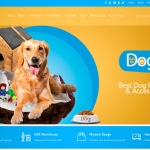
Parcels Out of Home Drive eCommerce Inside Home
Trends for 2025 in OOH e-commerce delivery. Parcel delivery used to be about waiting for the courier at home, not being sure when they will arrive. Whether they rung the door or just quietly left the parcel somewhere outside the house. Not to mention having to contact them in order to figure out where it’s best to leave the package if the addressee is not home. However, parcel lockers and pickup points have changed everything. Quickly becoming the go-to option across Europe. Now everything points out to the Out of Home (OOH) delivery being the default preference of the e-commerce buyers. This is an evolution that is fundamentally transforming the European last mile deliveries, making it not only cheaper, but also much more sustainable.
By 2030, the demand for last-mile e-commerce delivery is expected to grow by 78% as compared against the 2020 volumes, according to World Economic Forum. Companies are fighting over each other, trying to fulfill the customer expectations. But at the same time find it difficult to balance costs, sustainability, and client satisfaction. The answer came in form of the OOH delivery, which nowadays seems to be a go-to standard across the entire continent. As consumers increasingly value flexibility over their deliveries rather than waiting home delivery of parcels at set times.
Over the last year, in all of Europe automated parcel machines (APMs) saw 29% increase along with the addition of 6% more Pick Up/Drop Off points (PUDOs). In total there are currently 154 900 APMs and 349 230 PUDOs. OOH solutions popularity varies significantly across European markets. Poland is leading in terms of unique points with about 80,000 of those deployed in the country. Followed by the United Kingdom (50 910), France (50 530) and Italy (48 310). Although there are still some markets preferring traditional pickup points, most seem to be slowly drifting towards Out of Home solutions. Whose key operators across the continent include Deutsche Post/DHL, DPD (GeoPost) Group, GLS (IDS), InPost and UPS.
Sustainability as an instrument of change
Environmentalism has emerged as a driving factor behind OOH delivery solutions. A report highlights this fact by showing how four out of ten consumers expressly state they would prefer collecting parcels from pickup points in order to reduce carbon footprint. With 37% walking to parcel lockers while 62% collecting their packages as a complementary activity either during workday commutes, shopping or other planned activities. Notably. This is a nice push towards an increased physical activity. As walking to the parcel locker may incur a longer walk around the neighbourhood.
Trends for 2025 in OOH e-commerce delivery. Courier companies are meeting this “green demand” through comprehensive sustainability initiatives, electrifying delivery fleets and employing autonomous vehicles. Some even utilize artificial intelligence for route optimization purposes. As smart routing algorithms help reduce environmental impact while eco-friendly packaging solutions and solar powered parcel lockers showcase industry commitment to environmental responsibility.
The European Union is also playing an instrumental role in driving sustainability initiatives forward. In December 2023, the European Council established new regulations regarding the settlement of emissions from transport services including parcel delivery. These should speed up industry’s transition toward more eco-friendly delivery methods.

Trends for 2025 in OOH e-commerce delivery
Operational efficiency meets environmental sustainability
Last-mile delivery stands out as an area in which operational efficiency and environmental responsibility meet head on. According to the statistics presented by Last Mile Experts. This particular stage of e-commerce journey can account for as much as 65% of carrier distribution costs. Parcel lockers are proving valuable in this situation, as each of them can double the delivery capacity tenfold. From 60 packages across various addresses in the door-to-door mode to 600 parcels delivered all at one spot! In this case not only we are observing the reduced carbon emissions due to fewer vehicle trips, resulting in reduced fuel consumption and associated costs. Decreased congestion and noise pollution in urban areas as well as improved air quality. But also a significant decrease in the operational costs, as employees have to drive shorter distances among fewer addresses.
Re-commerce revolution
Another driving factor of the OOH delivery adoption is the re-commerce market growth, Which, as per the Last Mile Experts statistics, is projected to hit EUR120 billion by 2025 across Europe. This way consumers can offset their expenses and add a bit more money to their household budget by selling used items for reduced prices while buyers. Benefit from discounted access prices to goods they want to use or wear. Environmental awareness continues to foster sustainable consumption habits while through platforms such as Vinted or OLX has improved peer-to-peer trade.
The representatives of Generation Z in particular have undergone a cultural shift that has led to increasing acceptance of secondhand purchases as they search for eco-friendly, cost-efficient shopping alternatives. OOH delivery points play an important role here by providing secure, convenient. And cost-efficient shipping solutions – particularly important given that safety is a much more important factor for consumers when shopping online rather than in offline locations.
Cross-border collaboration and network expansion
There’s another aspect of sustainability in the OOH delivery – the strategic collaborations between operators. Partnerships like those seen between major players such as DHL and Cainiao or Allegro One’s utilization of Orlen Paczka lockers illustrate this trend well and their importance becomes even more clear given cross-border e-commerce trends. The customers are more open to shopping abroad, however, the logistical challenges necessary to handle in order to achieve this require innovative solutions. In markets where OOH infrastructure is not developed as much. It is common for courier companies to unite and create the joint network in order to benefit the customers of all companies. Sharing infrastructure costs allows faster network expansion while standardization of the delivery processes improve customer experiences. Improved tracking capabilities and optimized resource utilization lead to more effective operations while expanded market penetration provides all stakeholders in the delivery ecosystem with tangible returns on their efforts.
Trends for 2025 in OOH e-commerce delivery. The next logical step is the growth of open or agnostic networks of lockers and pickup points that aren’t owned by any operator. But allow multiple entities to share locations simultaneously to increase efficiency while decreasing environmental impacts and operational expenses. Shared infrastructure solutions have become more prevalent as companies shift toward sustainable delivery solutions with reduced operating expenses and operational expenses. The Last Mile Experts report predicts that the future will bring more increased market consolidation in this aspect. Especially when it comes to integration of those into urban areas planning.
What’s next in 2025?
The Last Mile Experts report predicts a significant expansion of OOH delivery services by 2025-2026, when B2C shipments could exceed 20 billion per year. They also anticipate that virtually every C2C parcel (sent and received by individual consumers) will be handled by OOH points. However, this does not mean the end of the courier era. Depending on the specifics of each market and its culture, the split between OOH and D2D (door-to-door) solutions is expected to be around 40-60%.
Technological progress remains at the core of industry innovation, as smart locker systems continue to incorporate temperature controls, AI-powered capacity optimization, predictive maintenance capabilities and enhanced user interfaces for reliable operation – all while integration into smart city infrastructure presents exciting possibilities for growth and development.
As a result, urban planning and regulatory frameworks are going to play a larger role in shaping OOH delivery networks. Cities are including parcel locker locations into their development plans to reduce traffic congestion and boost logistics efficiency. Regulatory bodies ensure appropriate placement while adhering to accessibility standards and environmental compliance, data protection regulations foster fair competition. And last, but not least, the safety requirements and aesthetic preservation guidelines promote harmonious integration into existing infrastructure.
To conclude
OOH solutions represent an optimal combination of consumer preferences, environmental responsibility and operational efficiencies. With 2025 rapidly approaching, parcel locker networks and pickup points expansion combined with technological innovations and cross-operator collaboration will further cement OOH delivery’s place as one of the cornerstones of modern e-commerce logistics solutions.
This evolution has been led by multiple factors working in tandem, including changing consumer behaviors, environmental awareness. Technological advances and regulatory support. OOH delivery solutions demonstrate how convenience and sustainability can coexist for mutual gain – creating value for consumers. Businesses and the planet alike. It is actually interesting to see that the sustainability can be an answer to the changing needs and preferences of consumers expecting more flexibility, comfort and information when it comes to choosing their preferred delivery methods.
As the industry evolves, it is likely that more innovative solutions will emerge – particularly when it comes to lockers, sustainability and cross-border cooperation. Making last mile delivery in Europe increasingly efficient, environmentally responsible and responsive to consumer needs than ever before.
About Alsendo:
Alsendo is a leader in delivery management solutions for businesses. Its goal is to provide comprehensive services and software in the field of shipping and after-sales processes across all customer segments. Alsendo’s core activities are aimed at improving the efficiency of clients’ shipping processes while maintaining the highest standards of service. Using cutting-edge technological solutions. Alsendo offers solutions across all customer segments who are looking for delivery management solutions tailored to their requirements. The company’s portfolio includes shipping services and technological solutions designed for business customers, including top e-commerce platforms, marketplaces, global enterprises, and SME/SOHO. More information about Alsendo: www.alsendo.com
Unleashing the power of data to scale your e-commerce in 2025












